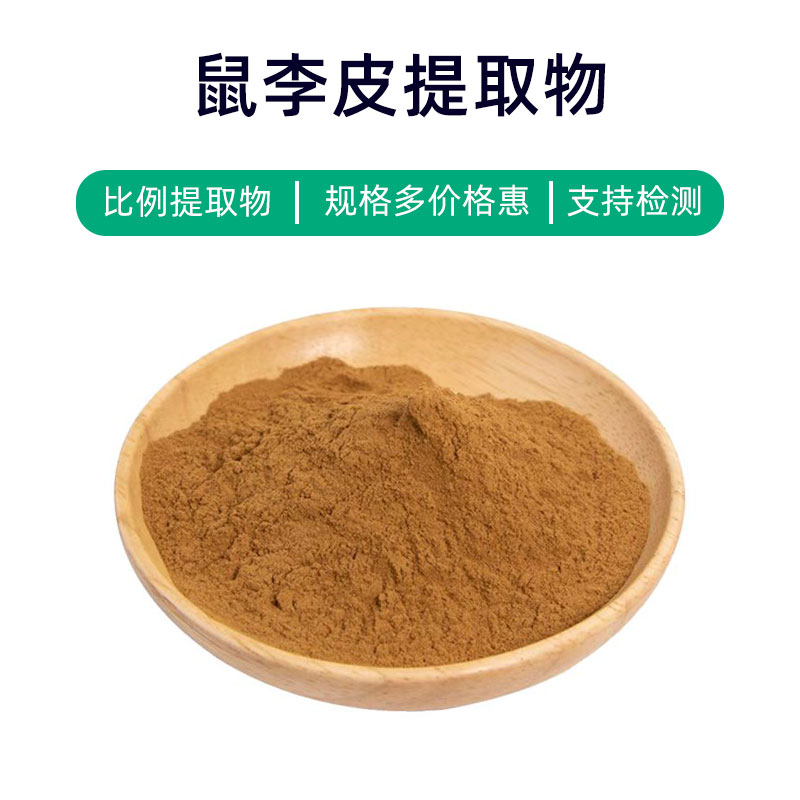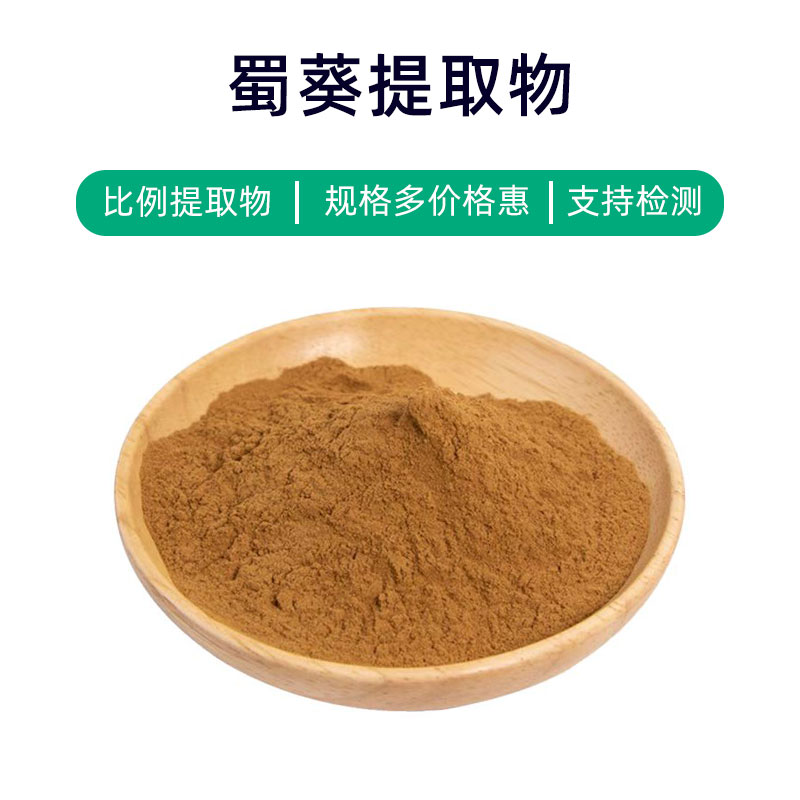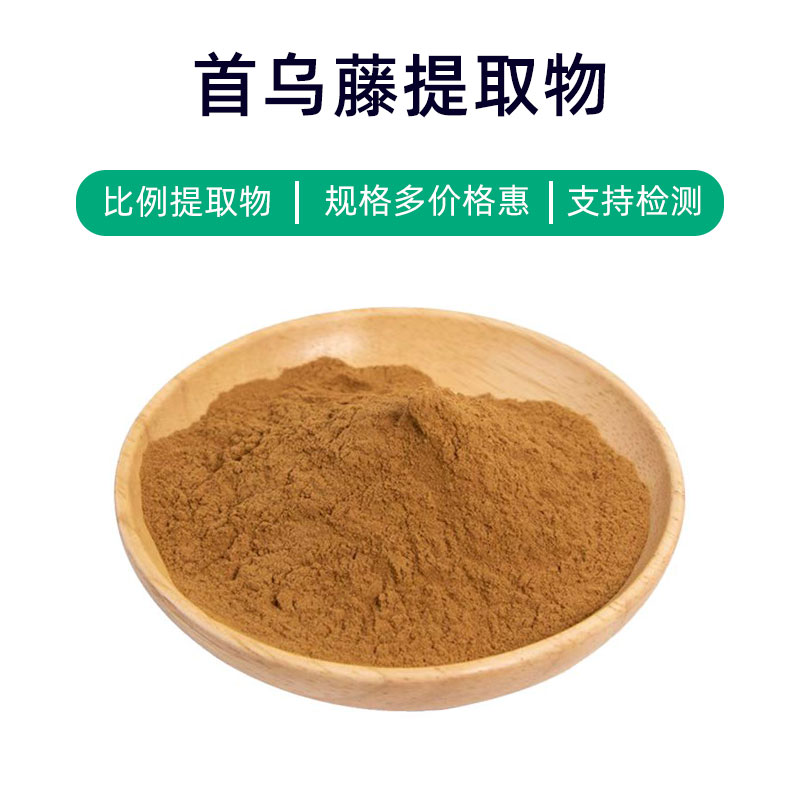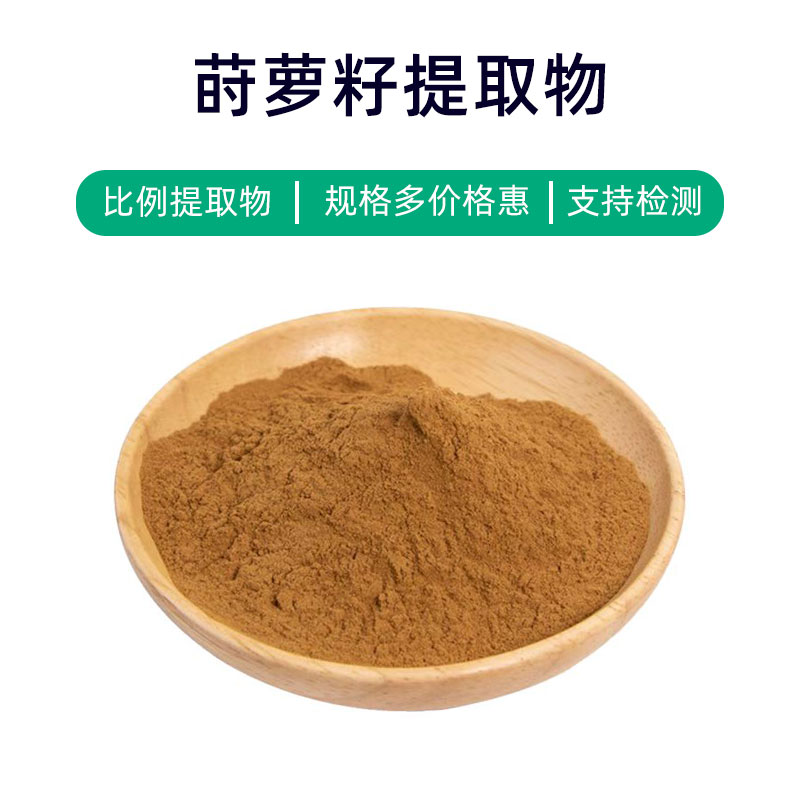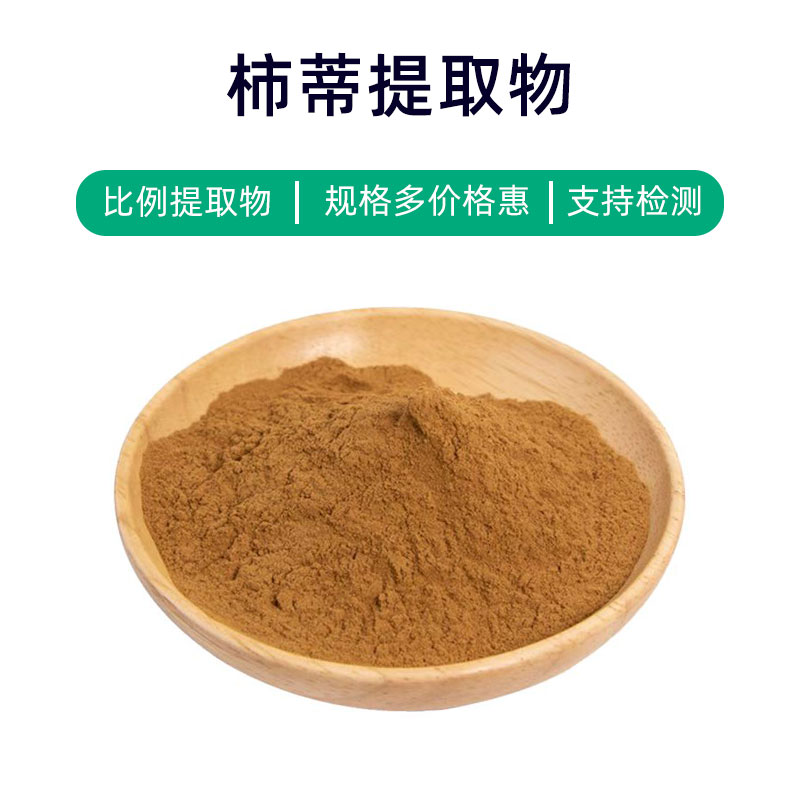Vine Honeysuckle Extract Product Overview
Vine honeysuckle extract is a natural plant extract derived from vine honeysuckle, primarily composed of active ingredients like amino acids, flavonoids, and polysaccharides. These components confer various benefits and applications.
First, the extract has antioxidant properties, which help eliminate free radicals, slow down skin aging, and protect the skin from environmental damage.
Second, the extract has anti-inflammatory effects, alleviating skin inflammatory responses and reducing discomfort such as redness and itching.
Additionally, the extract promotes skin health by enhancing cell metabolism and increasing skin elasticity, resulting in smoother and more refined skin.
In terms of application, vine honeysuckle extract is commonly used in skincare products, health supplements, and cosmetics, such as creams, lotions, serums, and masks, aimed at improving skin texture, reducing wrinkles, and brightening the complexion. It can also be taken as an oral supplement to help regulate bodily functions, boost immunity, and enhance overall health.
Overall, vine honeysuckle extract is a natural plant extract with diverse benefits and widespread applications, playing a significant role in skincare and health.
Vine Honeysuckle Extract Production Process
The production process of vine honeysuckle extract mainly involves several steps:
- Raw Material Preparation: Select fresh, dried vine honeysuckle as the extraction material, ensuring quality and purity. Clean and process the raw materials to remove impurities.
- Extraction: Add the cleaned raw vine honeysuckle to an extraction vessel, using an appropriate solvent (such as water or ethanol) to soak and extract the active components.
- Filtration and Separation: Filter the mixture using filtration equipment to separate solid residues and impurities, yielding the extract liquid.
- Concentration and Evaporation: Concentrate the extract liquid using evaporators to remove the solvent, thereby concentrating the active components.
- Precipitation: Control temperature and pH to precipitate the active components from the extract liquid, forming the extract.
- Drying and Grinding: Dry the precipitated extract to remove moisture, then grind it into a powder or granulated form.
- Packaging and Storage: Finally, package the extract in sealed containers to ensure product quality and stability. Store in a cool, dry environment, protecting it from sunlight and humidity to extend shelf life and usability.
The above outlines the main production process of vine honeysuckle extract. Through scientific production processes and strict quality controls, product quality and safety can be ensured.
Vine Honeysuckle Extract Benefits and Side Effects
Vine honeysuckle extract is a natural plant extract with various benefits and effects, including:
- Antioxidant Properties: Rich in natural antioxidants like vitamin C, vitamin E, and polyphenols, it helps eliminate free radicals, reducing cellular oxidative damage and promoting cell health.
- Immune Regulation: Research indicates that active components in vine honeysuckle extract have immune-regulating effects, enhancing immune function and increasing resistance to colds and other diseases.
- Anti-inflammatory and Antibacterial: Certain components in the extract exhibit anti-inflammatory and antibacterial properties, alleviating inflammation and pain while inhibiting certain pathogens, aiding in the prevention and treatment of infectious diseases.
- Liver Protection: Some studies suggest that vine honeysuckle extract may have protective effects on the liver, reducing liver damage and promoting cell repair and regeneration, assisting in the prevention and treatment of liver diseases like hepatitis and fatty liver.
- Blood Sugar and Lipid Reduction: Some research indicates that vine honeysuckle extract may help regulate blood sugar and lipid levels, improving circulation, and preventing and treating metabolic diseases like diabetes and hyperlipidemia.
- Anti-Aging: The extract’s various antioxidants and active components help slow down cell aging, reduce wrinkles and pigmentation, maintaining youthful and smooth skin.
Vine honeysuckle extract is generally safe; however, the following precautions should be noted:
- Use as directed, avoiding excessive doses.
- Individuals allergic to vine honeysuckle should refrain from using this product.
- Pregnant or breastfeeding women and children should consult a physician before use.
- Long-term high-dose use may lead to adverse reactions such as digestive issues or allergies; use in moderation and monitor for bodily reactions.
In conclusion, vine honeysuckle extract offers numerous benefits, but users should exercise caution, choose appropriate dosages and methods based on individual circumstances, and be aware of potential side effects.
Vine Honeysuckle Extract Applications and Dosage
Vine honeysuckle extract has widespread applications in medicine, food, and cosmetics. Below are its applications across different fields, along with recommended dosages:
- Medical Field:
- Commonly used to formulate traditional Chinese medicine remedies, such as vine honeysuckle granules and oral solutions, aimed at clearing heat and detoxifying, as well as reducing swelling and pain.
- Dosage: Typically taken orally, adults may take 10-15 grams per dose, 2-3 times daily; children should adjust the dosage accordingly.
- For topical formulations, vine honeysuckle extract can be made into pastes or washes for treating skin inflammation and rashes.
- Dosage: Apply a suitable amount to the affected area 2-3 times daily.
- Food Sector:
- Vine honeysuckle extract can serve as a natural food additive to enhance flavor, color, and health benefits.
- Dosage: Added according to food safety standards, typically 2-5 grams per 1000 grams of food.
- Cosmetics Industry:
- Vine honeysuckle extract is commonly included in skincare products for its antioxidant, whitening, and anti-aging properties, helping to moisturize skin and reduce wrinkles.
- Dosage: Included as an ingredient, used according to the formula's recommended proportions.
The usage and dosage of vine honeysuckle extract should be determined based on the specific formulation and purpose, while adhering to relevant regulations and standards in medicine, food, and cosmetics to ensure safe and effective use. During use, it is advisable to follow medical guidance, adhere to product instructions or professional recommendations, and avoid excessive use or allergic reactions.
Vine Honeysuckle Plant Introduction, Distribution, and Growth Environment
Vine honeysuckle (scientific name: Rubus chingii Hu) is a common woody plant belonging to the rose family. Below is an introduction to the source plant, its distribution, and growth environment.
- Source Plant Introduction:
The vine honeysuckle is a deciduous shrub or small tree, growing about 1-3 meters tall, with a branched crown and grayish-brown bark featuring vertical fissures. The leaves are palmately compound, with leaflets that are oval-shaped or oblong, and serrated edges. It flowers in spring, producing white blooms clustered at the ends of racemes. The fruit is an aggregate fruit that ripens to red or dark purple, juicy, and edible. - Distribution:
Vine honeysuckle is primarily distributed in the subtropical and temperate regions of southern China, including provinces such as Guangdong, Guangxi, Fujian, Hunan, Jiangxi, Zhejiang, Anhui, and Jiangsu. It grows in mountainous areas, foothills, riverbanks, alongside roads, forest edges, and fields. - Growth Environment:
Vine honeysuckle prefers sunny, moist, and well-drained environments. It is commonly found in the edges of forested hills, near streams, along ditches, in shrub areas, and mountain meadows. It shows strong adaptability to various soil types, thriving in loose, fertile sandy loam, calcareous, and acidic soils.
In southern China, vine honeysuckle is a common wild plant and is also cultivated. Its tasty fruits are rich in vitamins and minerals, frequently harvested for consumption or medicinal use. Its diverse growth environments confer adaptability and a wide distribution range in nature.
Vine Honeysuckle Extract Processing and Storage
The processing of vine honeysuckle extract mainly includes the following steps: First, harvest the mature vine honeysuckle fruits and clean them for preliminary processing to remove impurities. Next, grind or soak the cleaned fruits to extract the desired components. Then, employ suitable extraction methods such as water extraction, ethanol extraction, or supercritical fluid extraction to obtain effective components from the vine honeysuckle. Finally, through concentration, filtration, and drying processes, finalize the vine honeysuckle extract product.
Regarding storage, vine honeysuckle extract should be kept in a dry, cool, and well-ventilated environment, away from direct sunlight and humidity. Ideally, it should be stored in sealed containers to prevent exposure to oxygen, moisture, and other contaminants. Furthermore, avoid contact with harmful chemicals to ensure quality stability. Proper storage can prolong the shelf life of vine honeysuckle extract and maintain the stability and effectiveness of its active components.
Monica Sun is a seasoned expert in the plant extraction industry with over a decade of experience in research and production. She specializes in the extraction and purification of plant active ingredients, focusing on driving innovation in natural product applications. Monica has participated in the development of multiple functional plant extracts, delivering high-value natural raw material solutions for the health food, pharmaceutical, and dietary supplement sectors.









